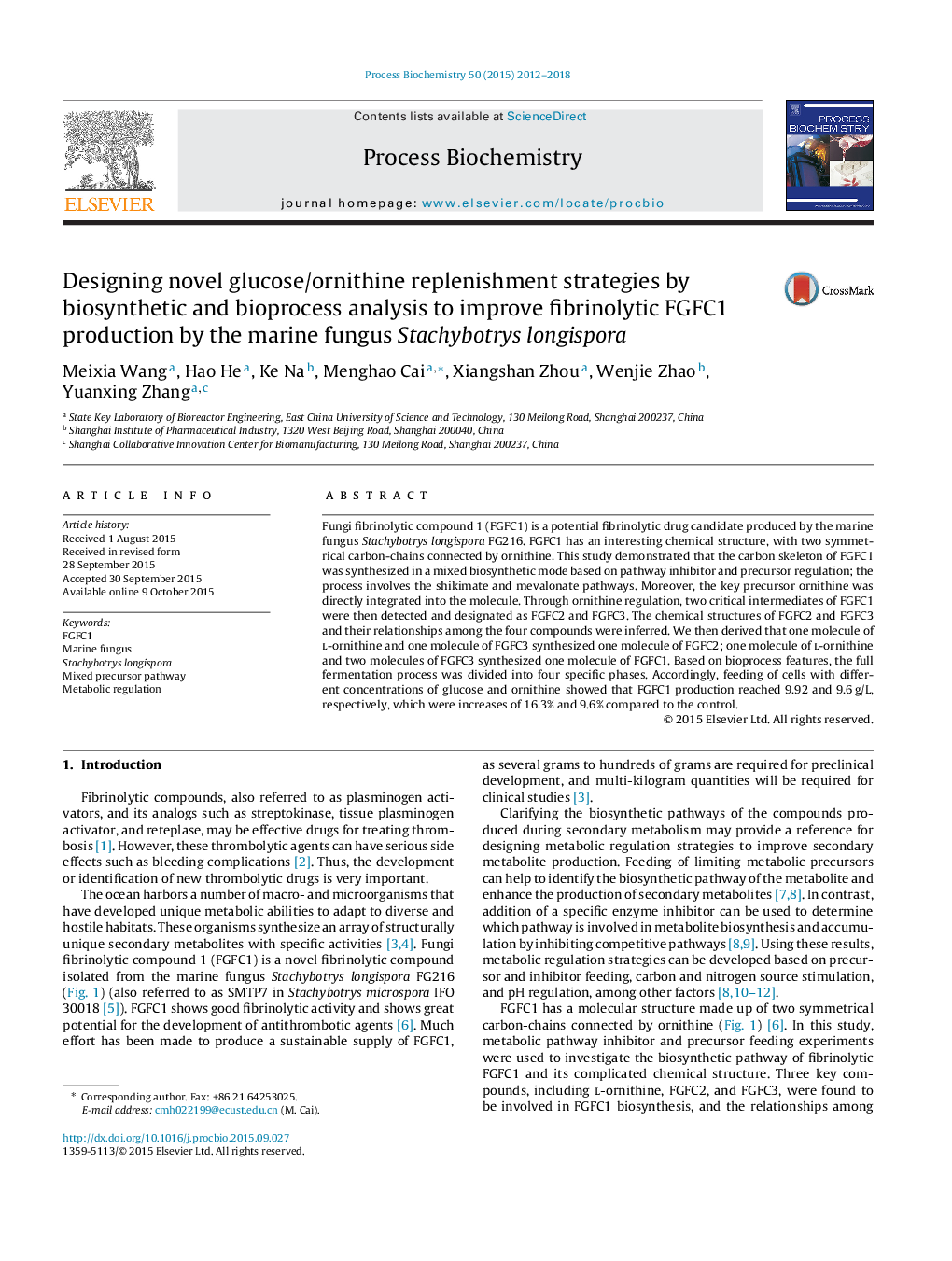| Article ID | Journal | Published Year | Pages | File Type |
|---|---|---|---|---|
| 34192 | Process Biochemistry | 2012 | 7 Pages |
•A mixed biosynthetic mechanism involving different pathways was identified for FGFC1.•Ornithine, as a key precursor, plays a critical role in FGFC1 biosynthesis.•Two critical intermediates FGFC2 and FGFC3 were found.•The proposed glucose/ornithine regulation strategies effectively improve FGFC1 biosynthesis.
Fungi fibrinolytic compound 1 (FGFC1) is a potential fibrinolytic drug candidate produced by the marine fungus Stachybotrys longispora FG216. FGFC1 has an interesting chemical structure, with two symmetrical carbon-chains connected by ornithine. This study demonstrated that the carbon skeleton of FGFC1 was synthesized in a mixed biosynthetic mode based on pathway inhibitor and precursor regulation; the process involves the shikimate and mevalonate pathways. Moreover, the key precursor ornithine was directly integrated into the molecule. Through ornithine regulation, two critical intermediates of FGFC1 were then detected and designated as FGFC2 and FGFC3. The chemical structures of FGFC2 and FGFC3 and their relationships among the four compounds were inferred. We then derived that one molecule of l-ornithine and one molecule of FGFC3 synthesized one molecule of FGFC2; one molecule of l-ornithine and two molecules of FGFC3 synthesized one molecule of FGFC1. Based on bioprocess features, the full fermentation process was divided into four specific phases. Accordingly, feeding of cells with different concentrations of glucose and ornithine showed that FGFC1 production reached 9.92 and 9.6 g/L, respectively, which were increases of 16.3% and 9.6% compared to the control.
Graphical abstractFigure optionsDownload full-size imageDownload as PowerPoint slide
